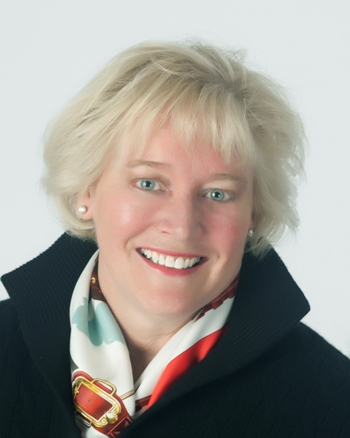
We last talked to Donna Sturgess in '06 when she was vice president of innovation at GlaxoSmithKline. Now, she's the founding partner and president of Buyology Inc.
GlaxoSmithKline was Donna Sturgess’ home for much of her 25-year career as she soared through the ranks to become vice president of marketing and strategy, and global head of innovation. But, ironically, it was her work there that ultimately triggered her departure.
Delving into a burgeoning field of research called neuroscience, which studies brain activity to understand consumer behavior, Donna was inspired by her ability to uncover responses that never would have been revealed by conventional methods. And, in 2009, she partnered with Martin Lindstrom (a collaborator in a cigarette study that revealed how warning labels were actually igniting a craving to smoke) and established the New York neuromarketing firm Buyology, named for Lindstrom’s best-selling book on the topic.
In our conversation, Donna speaks with great excitement about the potential of neuromarketing in advancing brands and the urgency with which marketers need to respond to the changing consumer landscape.
BP: It’s a big change running with a complex global corporation to where you are now...
DS: I left Glaxo with a fire in my belly to start this. Glaxo afforded me the opportunity to have a very deep understanding of how much science understands about why people choose; [something] that most people in this business don’t know anything about.
BP: What won you over about neuroscience?
DS: If you spend time in scientific literature and understand how the mind processes choice, you quickly find out that about 20 percent of the way we choose is rational-80 percent of how we decide is driven by the nonconscious. Neuroscience [gets at that 80 percent and] is a profound change in how the world practices marketing.
BP: Do you find yourself coming across skeptics?
DS: Like anything … clients are all over the spectrum; there are the early adopters and there are the very late laggard followers.
A “chunky” problem is often the reason people open their minds to this. So what happens, as they begin down this road, is that it suddenly props the door open. They understand the emotional construct they weren’t able to understand before. Companies who step into this space don't step out.
BP: There’s some concern that neuroscience takes creativity out of brand design...
DS: Around the world, we find agencies who say that so many great creative ideas have been left on cutting room floor because they don’t pass traditional testing. But design people realize we’re testing for emotion, and it’s quantitative [research]. And suddenly it becomes, ‘I love you guys. You can’t argue with the data.’
BP: Love that. So, how is design actually measured?
DS: Everything from color to images to shape geometry to lettering has an impact on how we interpret things nonconsciously. But we talk about the meaning that’s being made by the package apart from what it says. If you’re managing a brand, you’re in the biz of making meaning, otherwise you’re a commodity.
BP: What’s a brand’s best shot in doing that?
DS: You have the ability to communicate when you’re not slapping your logo over everything-you’re in an interaction now. And we see there’s a difference in how people choose; we process information differently when we don’t see the logo first. Maybe we see the content first and the logo later, or not at all.
BP: Not at all?
DS: When it’s not at all, it’s because there are assets you can use. For example, the Nike swoosh compared to the word Nike. You don’t always have to scream your brand name. That seems to matter in terms of how people process choice.
BP: And are there differences across mediums?
DS: The way I look at it…a brand has bought, owned and earned media. Advertising is bought media. Social media is earned media. And packaging is the owned media. The minute you start understanding [packaging] is media, you have a different headset.
BP: I think it’s brilliant that your firm puts out a “most desired” brand list.
DS: It’s actually a beautiful illustration [of how neuromarketing differs from conventional research methods].
[The conventional ‘top brands’] lists are fashioned using methodology that’s rationally based. They’re asking people and getting responses according to what people think they know and think they feel. We’re going deeper and understanding the primary influence coming from the nonconscious. We’re measuring desire.
BP: So, what do you hope to achieve with this startup?
DS: I really want to take this to a place that people would feel marketing has be changed. If you think about it, the whole world has changed around marketing and not very much about marketing itself has changed. We’re still doing segmentation studies, we’re still doing focus groups, we’re still testing what we knew and in the same ways we’ve done since the 1950s. Marketing has to begin to add more value to organizations that I think we find ourselves doing.
BP: That’s a great rallying cry...
DS: I feel passionately about us getting our businesses back up on their legs with really vibrant growth. In my corner of the world, this is some of the impact that I’m trying to have. [PH]
